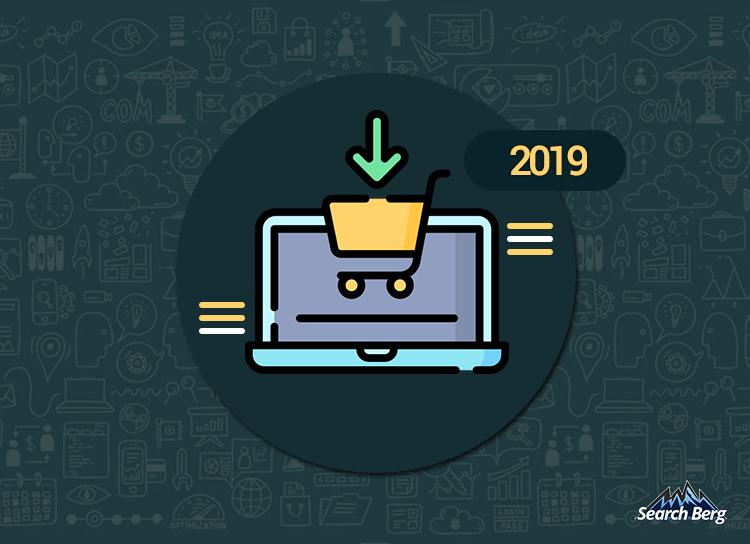How to Boost Your Online Store’s Google Rankings: A Practical Guide to eCommerce SEO
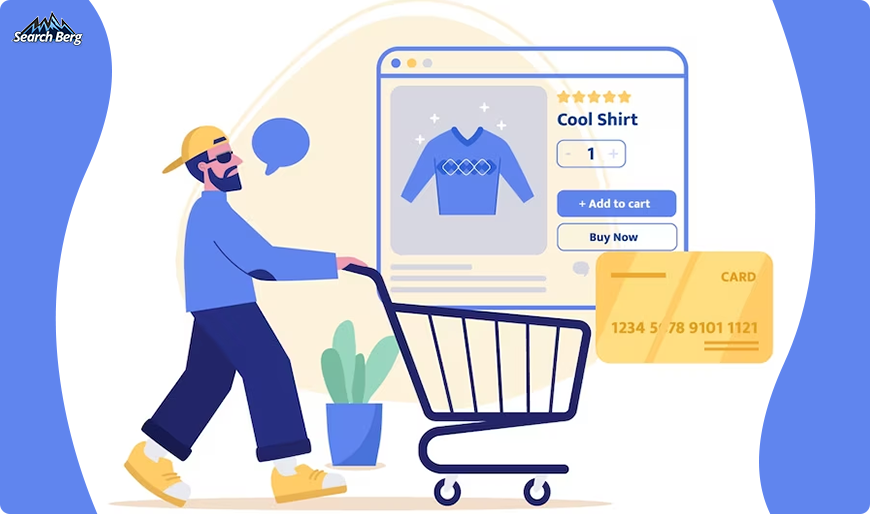
“Help, my online store is drowning!”
If you’ve been caught muttering these words while staring at your sales analytics in disbelief, welcome to the club; it’s packed with eCommerce enthusiasts trying to stay afloat in the stormy seas of digital marketing.
All hope isn’t lost. This isn’t the Titanic; your Google SERP rankings don’t have to sink like an anchor. If you’re looking for ways to revive your eCommerce website’s online visibility, you’re at the right place.
In this blog, our eCommerce SEO experts will help you navigate the complex waters of Google’s algorithm and steer your eCommerce ship toward SERP-topia. You’ll find clear, practical, step-by-step instructions on how to optimize your product pages, clean up your URLs, build a powerful backlink profile, and so much more.
This is the moment when SEO stops being a three-letter acronym that sends chills down your spine and starts being the secret weapon in your digital marketing arsenal. Our eCommerce marketing guide is ready; let’s roll it out!
1. Get Your Keyword Research Game On Point

Keywords are like the secret handshake that lets you into the exclusive club of high Google rankings. They’re the phrases and terms that potential customers type into the search bar when they’re looking for products like yours.
By strategically embedding these keywords into your content, you’ll give your audience exactly what they want. You’ll also manage to help Google understand what your eCommerce website has to offer. Feeding two birds with one scone? Check!
Keyword research is integral here. It’s about understanding the words your audience uses when they’re in buying mode and optimizing your website to speak to them in this language.
How do you discover these magical terms? Google Keyword Planner should be your starting point here. It’s a free tool that generates hundreds of keyword suggestions based on a single keyword, a group of keywords, or even your eCommerce website’s URL.
It also provides information on the average monthly searches for each keyword, the level of competition you’ll face, and even the potential cost per click if you were to use the keyword in Google Ads.
Think about the words and phrases that relate to your products. These should be words that your customers use frequently. Pop these into Google Keyword Planner to uncover a whole world of keyword variations and opportunities.
Now, you may be tempted to grab the keywords with the highest search volumes and stuff them into your content like a turkey on Thanksgiving.
That’s not a rabbit hole you want to go down.
It’s important to note that keyword research isn’t just about quantity; it’s about quality and relevance. Choosing the right keywords is like choosing the right ingredients for a recipe. A pinch of high volume, a spoonful of high relevance, and a dash of low competition can create the perfect SEO soufflé.
Additionally, don’t forget about long-tail keywords. These are longer, more specific phrases that customers use when they’re closer to making a purchase or when they’re using voice search. They may have lower search volumes, yes. But they often have higher conversion rates.
While Google Keyword Planner is an excellent tool for keyword research, it’s a mere starting point. In 2023, you can find dozens of robust, cutting-edge, and advanced eCommerce SEO keyword research tools that fetch the best keywords with detailed insights and actionable suggestions.
Speak with eCommerce SEO experts to get the ball rolling. A strategic partnership with an eCommerce SEO agency that specializes in keyword research is your best bet here.
At Search Berg, we offer SEO keyword research services of our own. Our team uses its vast experience, rich knowledge of eCommerce SEO, wide skillset, and savvy tools to find the highest-ranking keywords for your local industry and audience. We masterfully incorporate these keywords into your eCommerce content for stellar results.
Whether you work with us or explore other paid tools, make sure you eventually segue into the more “hardcore” side of eCommerce keyword performance. Yes, beginner-friendly tools are great for up-and-coming eCommerce businesses. But as your store starts gaining traction, making more sales, and developing a unique online identity, it’s time to bring out the big guns that give you phenomenal results.
2. Optimize Your Product Pages

Think of your product pages as your digital store’s window displays. They’re often the first touch point for potential customers and hence, must be engaging, informative, and SEO-friendly.
Google needs to understand what’s being offered, and your customers need to feel compelled to open their wallets.
Here’s how you can achieve this:
Speak in Keywords
Now that you’ve armed yourself with a compelling list of keywords (thanks to your top-notch research), it’s time to put them to work.
Integrate these keywords into your product titles, descriptions, meta tags, and image alt text in a way that feels natural. Keep in mind that Google is smart and doesn’t appreciate keyword stuffing. You’re writing for humans first and search engines second.
Let’s say you’re selling handmade wooden chess sets. Your keyword research has indicated that “handmade wooden chess set,” “luxury chess set,” and “artisan chess board” are frequently used by your target audience.
Here’s how you can naturally integrate these keywords into different elements of your product page:
- Product Title: Premium Handmade Wooden Chess Set
- Meta Description: Are you looking for luxury chess sets that transform your game into an aesthetically appealing experience? Start exploring our collection of handmade wooden chess sets to experience the artisan chess board difference!
- Product Description: Our handmade wooden chess set is a blend of functionality and luxury. This artisan chessboard adds an element of sophistication to any setting. Our luxury chess set comes in two colors: brown and black.
See what we mean?
Craft Unique and Descriptive Titles
eCommerce product titles are like the headlines of a newspaper article; they must catch the reader’s attention and give them an idea of what to expect.
Make sure your titles are descriptive, unique, and engaging. They should also include your primary keyword. For instance, instead of “Blue Jeans,” a more engaging and SEO-friendly title could be “Men’s Blue Slim Fit Jeans.”
Here are a few examples of how you can transform bland product titles into keyword-optimized ones:
- Instead of “Black Leather Boots,” try “Men’s Black Leather Ankle Boots: Rugged & Stylish”
- Instead of “Silver Necklace,” try “Sterling Silver Pendant Necklace with Cubic Zirconia”
- Instead of “Organic Tea,” try “Organic Green Tea Blend with Jasmine: Refreshing & Aromatic”
Enrich Your Product Descriptions
When it comes to product descriptions, more is more. Google appreciates detailed, unique, and insightful content that accurately captures the product.
Talk about the product’s features and benefits. And, of course, weave in your keywords where they make sense.
A product description should tell a mini-story while helping web users understand why it’s a must-have. Let’s stick with the handmade wooden chess set example:
- Poor Description: “Wooden chess set. Handmade. Includes 32 pieces.”
- Enriched Description: “Indulge in the timeless game of kings with our premium, handmade wooden chess set. Each set is crafted from sustainably sourced oak and showcases the refined beauty of the wood. Its unique grain patterns make it a one-of-a-kind masterpiece. The set comes with 32 meticulously carved pieces. Each piece has been weighted and felted for a comfortable, steady feel. Whether you’re plotting your next move in the quiet morning hours or hosting an evening of intellectual duels, this chess set serves as a stylish centerpiece that elevates your decor and gaming experience. Artisan design meets functional elegance in this luxury chess set: a worthy addition to any chess enthusiast’s collection.”
Catch our drift?
Use High-Quality Images and Optimize Them
Visuals play a vital role in SEO for eCommerce product pages. High-quality images aren’t just a nice-to-have; they’re non-negotiable.
But remember, Google can’t ‘see’ images; it relies on the image filename and alt text to understand what the image represents.
Make sure your filename reflects the product (e.g., mens-blue-slim-fit-jeans.jpg), and use alt text to provide a descriptive, keyword-friendly explanation of the image.
Let’s take the example of an online store that sells artisan coffee mugs. Here’s how you should optimize an image:
- Original Filename: jpg
- Optimized Filename: handmade-artisan-coffee-mug.jpg
When you upload this image to your product page, you’ll have the option to add alt text. This is where you further describe the image using relevant keywords.
Leverage Customer Reviews
Positive reviews can provide a significant eCommerce SEO boost. They add fresh and unique content to your page (which Google loves) and help build trust with your customers.
Encourage your customers to leave reviews and actively respond to them (even the less-than-perfect ones).
Let’s say your eCommerce website sells high-end vegan skincare products. A customer leaves the following review:
- Customer Review: “I love the rejuvenating night cream! My skin feels so soft,and I love that the product is 100% vegan and cruelty-free. I’ve been using it for a month, and I can already see a difference!”
The review is a great way to add fresh, unique, and flattering content to your product page. It also reinforces important keywords like “vegan,” “cruelty-free,” and “rejuvenating night cream.”
Good American is known for mastering this neat little trick. Their product pages feature flattering reviews that further compel web users to proceed with a purchase.
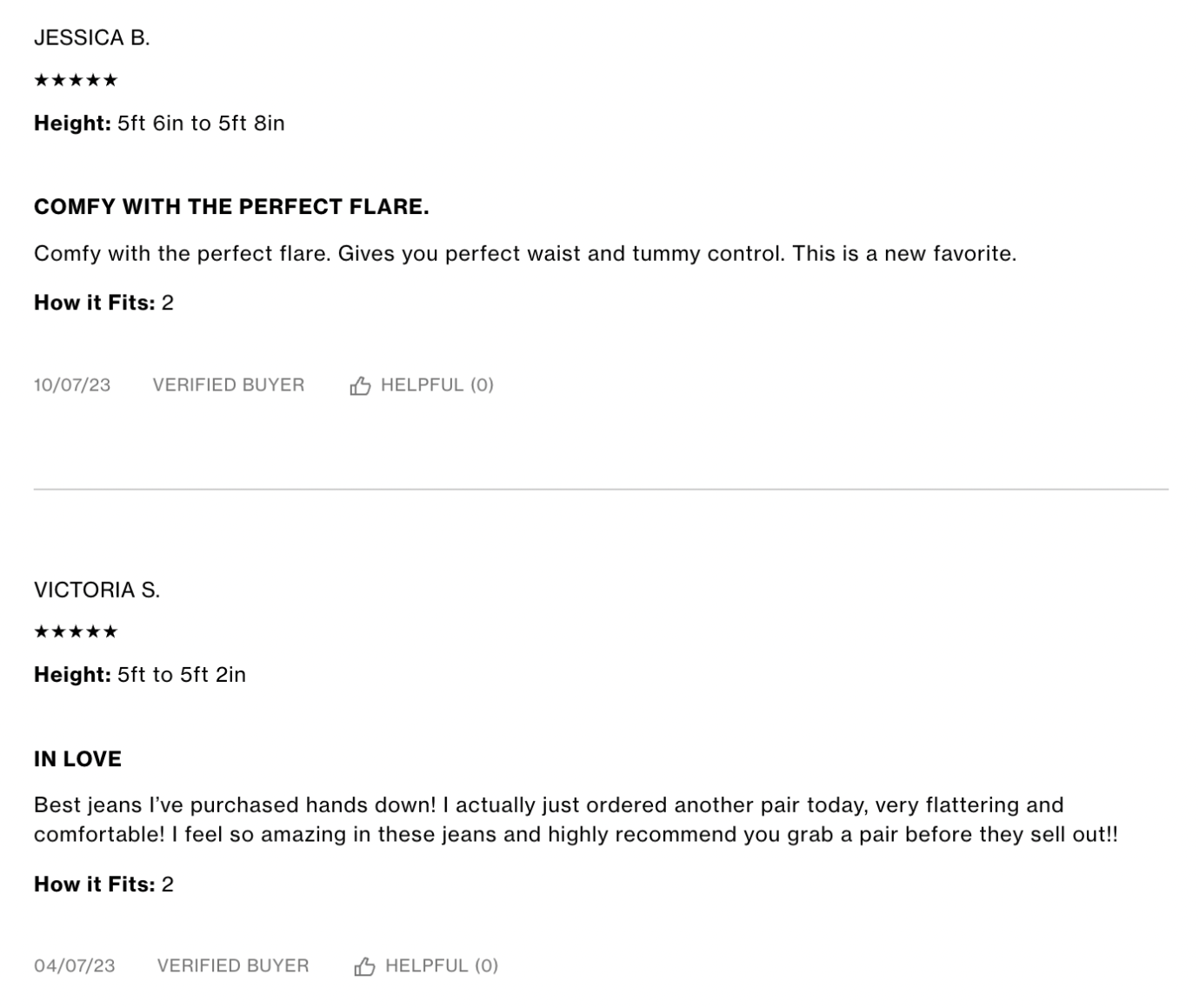
iRobot uses the same approach to boost conversions and show Google that the savvy brand knows exactly what it is doing.
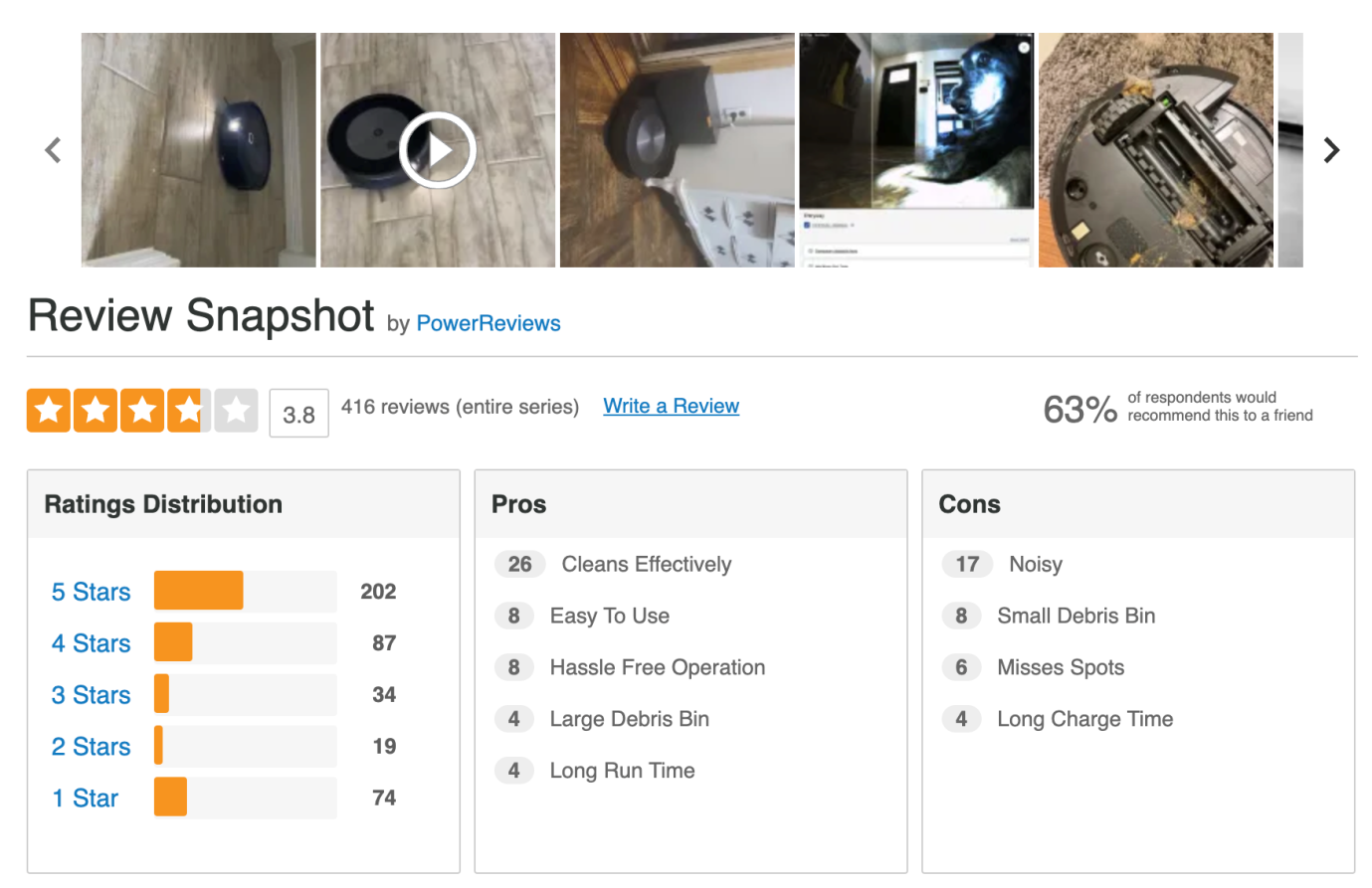
If you’re having trouble generating reviews, talk to our eCommerce SEO experts. We’ll walk you through the best techniques for generating a substantial number of positive reviews through white-hat eCommerce SEO practices.
Once you master the art of SEO for eCommerce product pages, you’ve taken care of half the work. How come? Since you run an online store, your products are the heart and soul of your business. Sprinkling some optimization glitter over your product pages will help you earn a power-packed boost in online visibility, climb SERPs faster than Usain Bolt, and make enviable sales.
Sounds like a plan?
3. Clean Up Your URLs
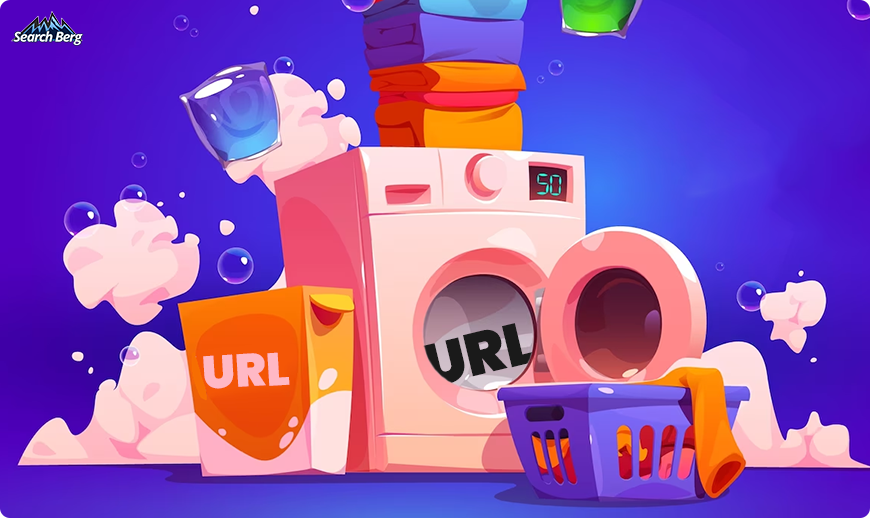
Have you ever received a letter with a messy address and no return address? It’s confusing, right? The same goes for your eCommerce website’s URLs. If they’re confusing to Google, they’ll be confusing to potential customers as well. This is where URL optimization comes into play.
Your URLs are like the addresses of your web pages. They should clearly tell both search engines and users what they can expect to find on the page. And while URL structure may seem like a small factor, it can significantly influence your site’s search engine visibility. Here’s how you can clean up your URLs:
Keep It Simple and Straightforward
Aim to keep your URLs as simple and descriptive as possible. The goal is to give users and search engines an idea of what the page is about. For example, “www.yourstore.com/category/item123” doesn’t tell us much about the page’s content. On the other hand,”www.yourstore.com/women-sweaters/red-wool-sweater” clearly indicates what we can expect to find on that page.
Use Keywords
Keywords should find their way into your URLs as well. If you’re selling a blue cotton men’s shirt, “www.yourstore.com/men-shirts/blue-cotton-shirt” would be both user-friendly and SEO-friendly.
Use Hyphens to Separate Words
When it comes to separating words in a URL, hyphens are the way to go. Why? Search engines, like Google, view hyphens as spaces; “blue-cotton-shirt” is read as “blue cotton shirt,” whereas “blue cotton shirt” could be read as a single, nonsensical word.
Avoid URL Parameters When Possible
URL parameters, like those in “www.yourstore.com/product?id=123,” can be confusing to search engines and users alike. If your eCommerce website generates these types of URLs, look into URL rewriting options to create cleaner, more readable URLs.
Keep It Lowercase
Always use lowercase letters in your URLs. Why? URLs can be case-sensitive. A user may remember your URL and type it into their browser in all lowercase. If the actual URL contains uppercase letters, this could lead to a 404 error, which isn’t good for user experience or SEO.
4. Optimize Your Site for Mobile

Once upon a time, there was a magical land where users only browsed websites on desktop computers. We don’t live in that land anymore.
In 2023, mobile devices account for 59% of web traffic. Mobile optimization isn’t a consideration anymore; it’s a critical factor in eCommerce SEO.
And it’s not just about user experience. After introducing mobile-first indexing, Google primarily uses a site’s mobile version for ranking purposes. If your site isn’t mobile-friendly, you’re losing out on precious Google real estate.
How can you make sure your eCommerce website shines on smaller screens? Here’s how.
Responsive Design
A responsive design ensures your site layout and content dynamically adjust to fit the screen being used. This means whether your customer is shopping on their tablet, smartphone, or desktop, your site maintains its integrity and usability.
Speed It Up
Mobile users are often on the go and have little patience for slow-loading pages. In fact, Google has confirmed that 53% of mobile users exit a site if it takes longer than 3 seconds to load.
Use tools like Google’s PageSpeed Insights to test your site speed and receive recommendations for improvement. Compress images, minify code, and leverage browser caching to keep your site light and fast.
On smaller screens, simpler is better. Streamline your navigation to make it easy for mobile users to find what they’re looking for. Implement hamburger menus, use large, finger-friendly buttons, and keep important items within easy reach.
Touch-Friendly Design
Nothing frustrates a mobile user more than trying to tap a tiny button or link. Make sure all clickable elements on your site are touch-friendly. This includes buttons, form fields, and even your text links.
Prioritize Local SEO
Many mobile searches have local intent, i.e., web users look for businesses “near me.” If you run a physical eCommerce store, prioritize local SEO.
Your business’s name, address, and phone number must be consistent across all online platforms. Leverage your Google Business Profile (GBP) to boost your local visibility (more on this later).
Mobile-Friendly eCommerce Websites at a Glance

- ASOS: ASOS’s mobile site is a visual treat. As you keep scrolling, you’ll notice the perfect blend of colorful content and white space. The outcome? A clean, uncluttered, digestible look.
The product images are high-quality, users can zoom in for a better view, and there are no navigation issues. The checkout process is streamlined; customers can easily complete their purchases within a few steps.Talk about brilliant mobile eCommerce SEO!
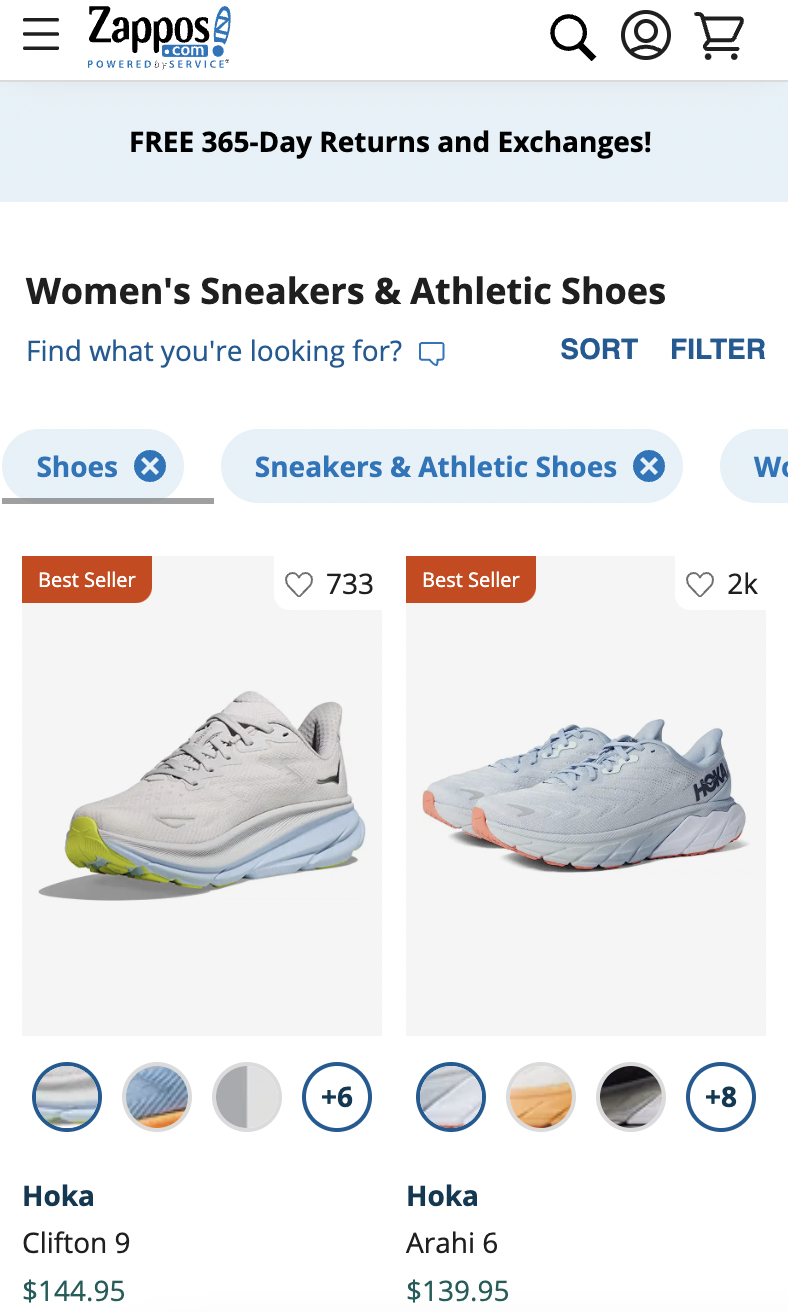
- Zappos: Zappos offers an excellent mobile shopping experience. Thee Commerce website loads quickly, the product categories are organized in a simple, easy-to-navigate menu, and there’s ample white space.
They have also optimized their product pages to include clear descriptions, multiple images, and customer reviews.
Zappos masterfully provides all the information a customer might need to make a purchase decision.This is what we mean when we talk about good SEO for eCommerce product pages!
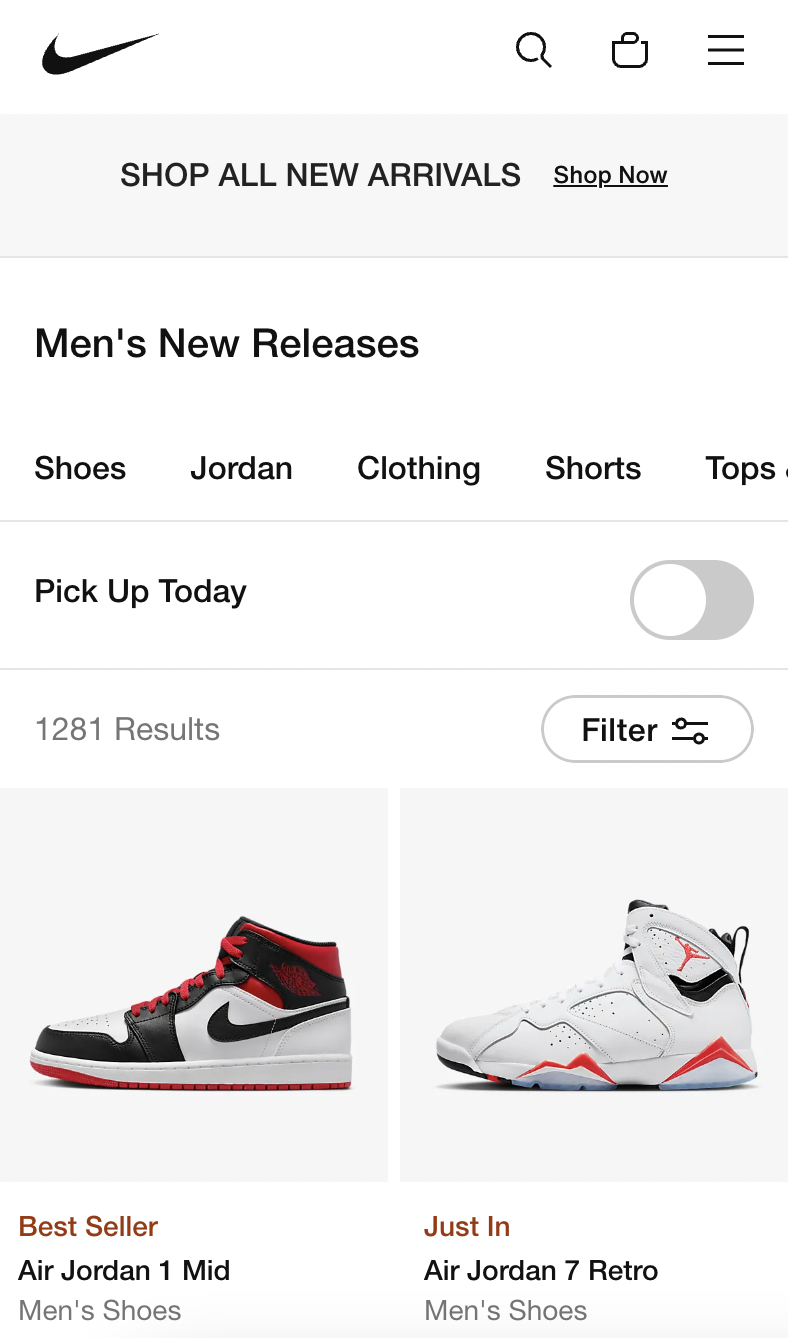
- Nike: Nike’s mobile site is exceptionally well-organized; customers can easily browse through their extensive product lineup without so much as a grunt. The site is fast, the product images are aesthetically appealing, and there’s plenty of white space to prevent clutter.
The site also incorporates short videos to demonstrate products and enhance user engagement. Nike has mastered SEO for eCommerce product pages!
5. Take Advantage of Local SEO
We lightly touched upon local SEO earlier. In this section, we’ll go all out to help you master the ropes. Here’s how you can boost your local eCommerce SEO game like a seasoned pro:
Create a Google Business Profile (GBP) Account
Your Google Business Profile (GBP) profile is the first thing a user sees when they perform a local search. GBP is a free tool that enables you to control how your business appears on Google Search and Google Maps, including your business name, location, and hours of operation.
By creating and optimizing a GBP profile, you can boost your local presence, display customer reviews, and provide quick access to your eCommerce website.
Here’s a quick example. Let’s say a web user is looking for a divorce lawyer in New York. They run a quick Google search, and the following results show up:
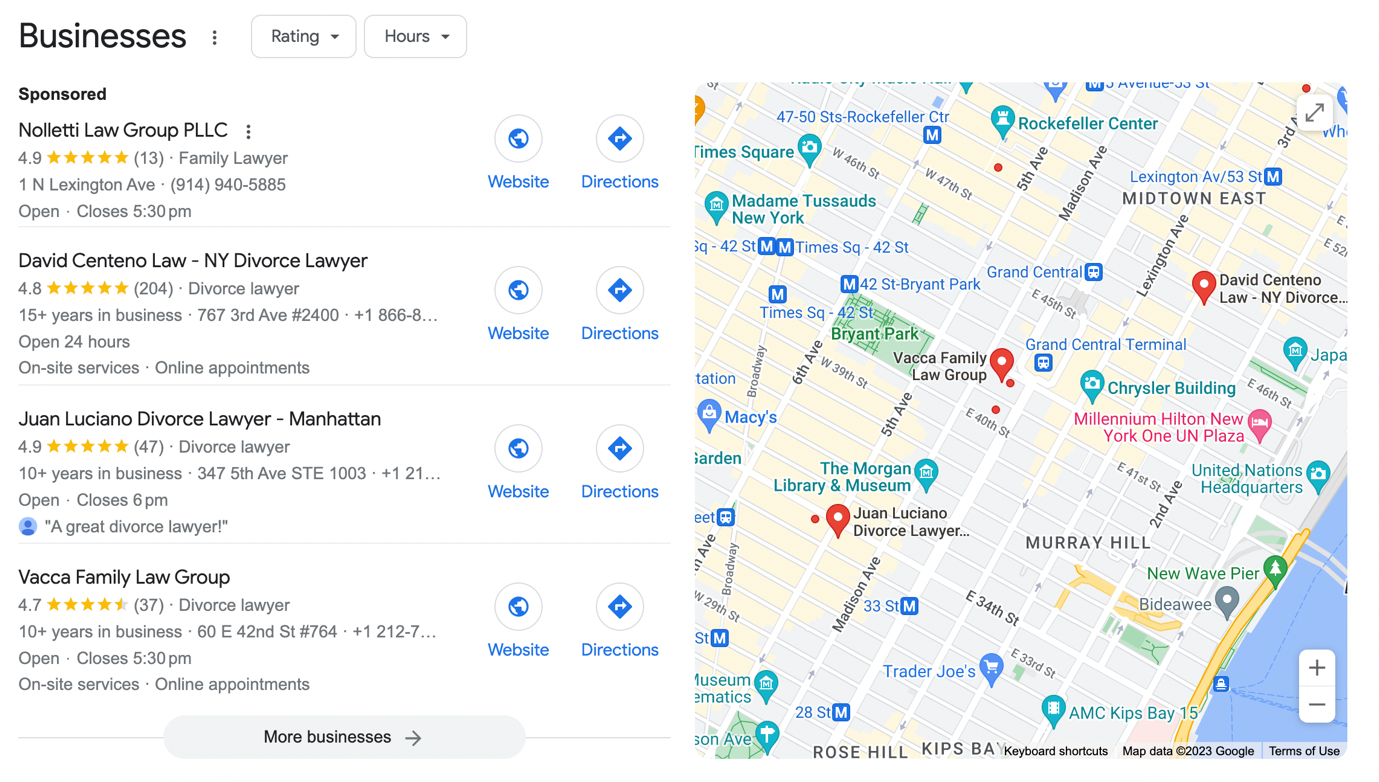
What does this include? GBP profiles. If you’ve created and optimized your GBP profile, you’ll increase your chances of making it to the Google Local 3-Pack.
See how this works?
Encourage and Respond to Online Reviews
Online reviews are a powerful form of social proof and play a significant role in local SEO for eCommerce websites.
Encourage your customers to review your business and promptly respond to each review to show that you value their feedback. Actively responding to reviews demonstrates your engagement with your customers; it also shows Google that your business is active and trustworthy.
Optimize for Voice Search

Voice search isn’t just growing in popularity; it has officially become as commonplace as a strainer in a household.
Voice search queries are often longer and more conversational; they frequently contain a location. Ensure your content is conversational and answers the kind of questions users might ask their voice assistant.
Utilize Local Keywords
Your SEO strategy should incorporate local keywords. For example, if you run a physical store in Austin, Texas, use keywords like “vintage clothing store in Austin” or “Austin’s best vegan skincare products.”
Add Local Business Schema
Schema markup is a powerful yet underused form of SEO that can boost your visibility on SERPs. It’s a type of micro data that helps search engines understand your content better.
Local business schema can include information like your business’s name, address, operating hours, and geographical coordinates.
Create Local Content
Creating locally-focused content is an excellent way to boost your local SEO efforts and engage local customers. For example, a blog titled “The Best Summer Outfits for Austin’s Weather” masterfully targets a local keyword and provides value to local customers.
Here are some excellent examples:



Pretty cool, right?
6. Leverage the Power of Backlinks
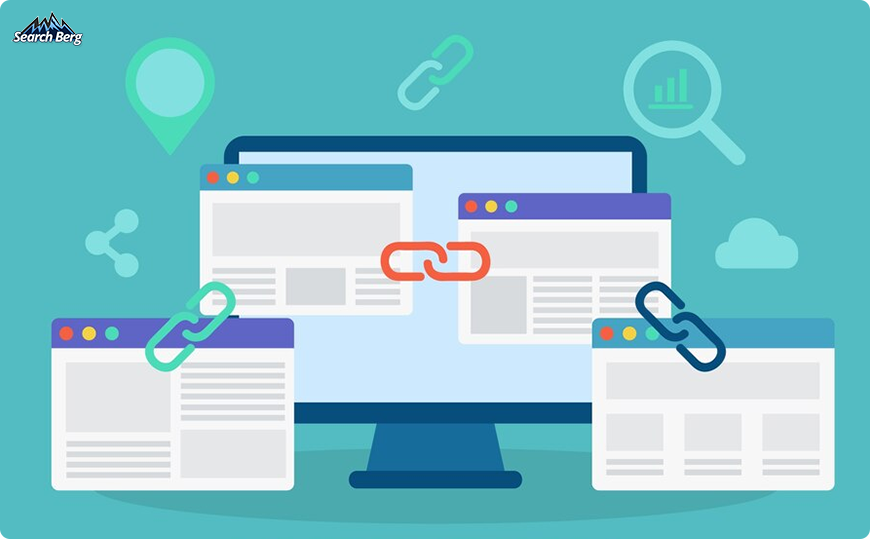
Backlinks are often considered the lifeblood of SEO, and it’s easy to see why.
A backlink is a hyperlink on a third-party platform that takes readers back to your site. In the eyes of search engines, a backlink is like a vote of confidence. It says, “Hey, this site has valuable content worth referring to!”
The more high-quality backlinks your site has, the more trustworthy it appears to search engines, which can significantly boost your rankings.
Now, how do you acquire these valuable backlinks? Link building isn’t an overnight process; it requires strategy, creativity, and patience. Here’s how you can go about it.
Start with great content. Engaging, shareable, value-added, and insightful content is the cornerstone of any successful link building strategy.
If your content is insightful, informative, or entertaining, other sites are more likely to link to it. This could be anything from in-depth how-to guides to data-driven reports or even infographics.
Next, consider guest blogging. By writing a guest post for another site in your niche, you’re doing two things. First, you’re positioning yourself as an industry expert, which can result in greater credibility and visibility for your brand. Second, you’re usually allowed to include a backlink to your site, which can help improve your domain authority and fetch referral traffic.
When it comes to guest blogging, remember, quality trumps quantity. It’s better to have a few backlinks from high-authority, reputable sites than numerous backlinks from low-quality sites. Google knows the difference; it’s no dummy. You can’t outsmart it, no matter how hard you try.
If you haven’t already, utilize your business relationships. Collaborations, partnerships, and networking can all provide opportunities for backlinks.
For instance, if you supply products to a business, you could ask them to link back to your site in their supplier’s section. Or, if you sponsor an event, you could request a backlink from the event’s webpage.
Then, there’s the option of unlinked mentions. Scan the web for any mentions of your brand that aren’t linked back to your site. If you find any, reach out to the site owner and request them to add a link. They’re already talking about you, so they may be open to adding a backlink.
And lastly, don’t forget the power of social media. Although social media links are typically “no-follow” (meaning they don’t pass SEO value), they can still bring traffic to your site, increase your online visibility, and offer another way for people to share your content. All of this can result in more organic backlinks.
Recommended Read: Going Beyond Backlinks: Harnessing the Power of Shallow Link Building
7. Harness User-Generated Content
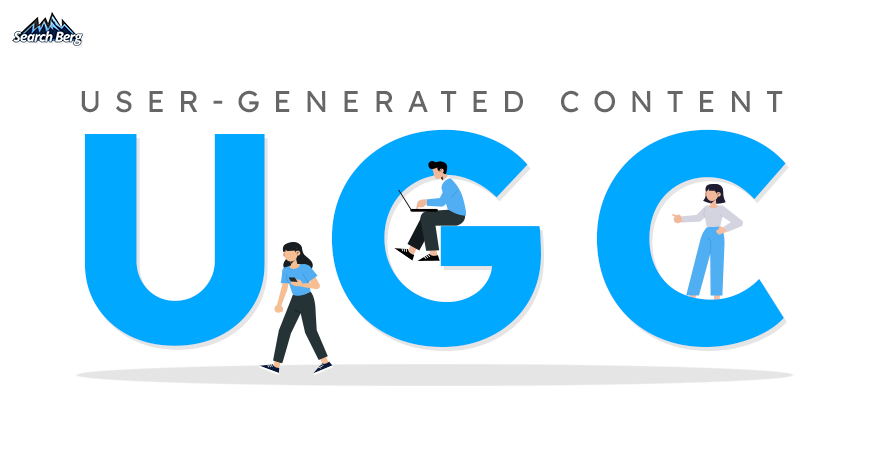
The power of user-generated content (UGC) lies in its authenticity. Unlike branded content, UGC is perceived as unbiased and reliable. It’s a potent tool for fostering trust and boosting engagement. And, in the world of eCommerce SEO, trust and engagement translate into higher rankings.
UGC can take many forms. From customer reviews and ratings to user-submitted photos and Q&As, these pieces of content add real value to your website. They offer prospective customers a glimpse into the experiences of others who have already purchased and used your products.
How can you strategically use UGC to augment your eCommerce SEO strategy? Let’s break it down.
Encourage Customer Reviews
Customer reviews are the pulse of any eCommerce store. They provide a real-life perspective of your products and contribute fresh, unique content to your eCommerce website (which search engines love).
Encouraging customer reviews, however, requires more than just adding a cute little “Leave a Review” button to your product pages and calling it a day.So, what’s the right way to go about things?
Start by sending out post-purchase emails requesting reviews. These emails must be well-timed. Consider sending them a few days or a week after the product was last delivered; this means the customer has had a chance to use it.
Personalize your requests and express appreciation for their time and feedback.
Here’s a great example:
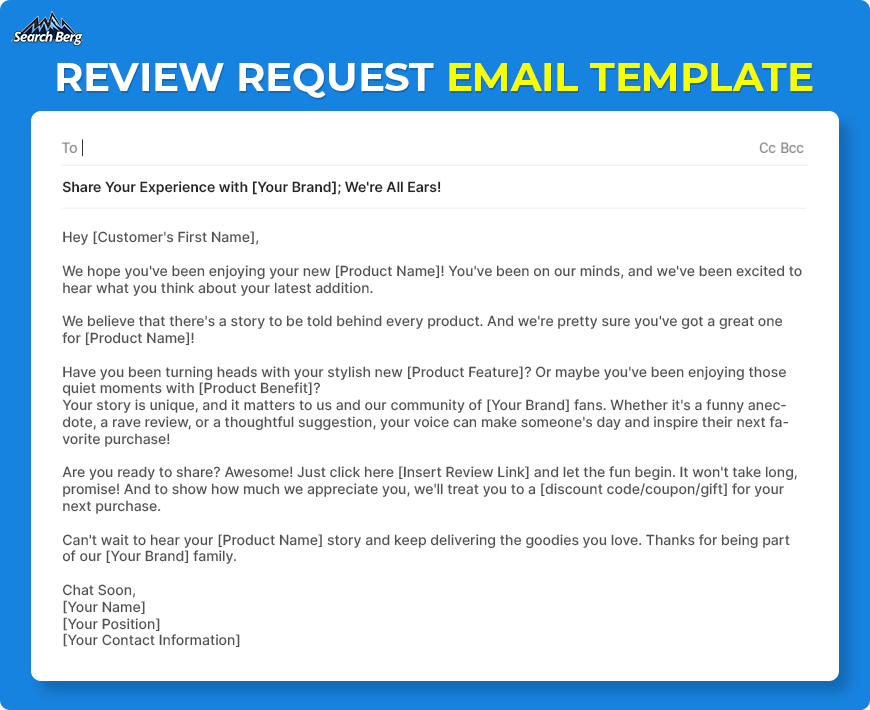
Incentives can also be a powerful tool to encourage reviews. Offering a discount code, a gift card, or points in your loyalty program can nudge customers who may not leave a review otherwise.
Keep the goal in mind: you’re not trying to ‘buy’ positive reviews but rather reward customers for their time and effort. Hire eCommerce SEO content experts who can craft engaging, fun, and compelling review request emails for you.
Leverage User-Submitted Photos
User-submitted photos add a touch of authenticity to product pages that polished professional shots simply can’t match. They provide a realistic view of your products ‘in the wild’ and help potential customers visualize the product in their own life.
Encourage your audience to share their product photos on social media platforms using a dedicated hashtag for your brand. Feature the best user-submitted photos on your site and social media channels; make sure you give credit to the original posters. This is an excellent way to generate valuable content. It also fosters a community around your brand, promotes further engagement and content creation, and strengthens your brand identity.
Foster a Q&A Community
A vibrant Q&A community can turn your product pages into a hub of user-generated content! By allowing customers to ask and answer questions about your products, you’re providing valuable information to potential buyers while adding unique, keyword-rich content to your site.
Make sure you have a system in place that notifies past purchasers when a new question is posted. The question at hand should only pertain to products your customers have previously purchased from you. This encourages past buyers to engage and share their knowledge. Keep monitoring and moderating this space. Step in to answer questions if needed and ensure the conversation remains positive and on-topic.
Utilize User-Generated Videos
Videos are incredibly engaging and can significantly increase the time users spend on your eCommerce website: a metric that Google considers when ranking pages. User-generated videos, in particular, can add depth to your product pages and provide a dynamic alternative to written reviews.
Encourage your customers to create product review videos, tutorials, and unboxing videos. Share these on social media or directly on your product pages.
Make sure you offer guidance and possibly even video creation tips to your customers. This will help you ensure they create valuable, relevant, and high-quality content. Featuring the best user-generated videos on your platforms can incentivize more customers to get involved!
8. Optimize Your Site’s Speed

A fast-loading site is non-negotiable. With every additional second your eCommerce website takes to load, you risk losing impatient visitors, increasing your bounce rate, and reducing conversions.
What’s more, Google considers page speed as a ranking factor, meaning a slow site could hinder your SEO performance.
Improving your site’s speed isn’t just about keeping the speed demons at Google happy, though. It’s about offering your users a smooth, frustration-free experience that encourages them to stick around, explore, and eventually hit that coveted ‘Buy Now’ button.
How can you ensure your eCommerce site is a veritable Usain Bolt in the World Wide Web’s Olympic Games? Here are some practical steps to take:
Minimize HTTP Requests
Each time a web user visits a page on your eCommerce website, their browser pings your server (a process known as an HTTP request) for every single element on that page. This includes images, scripts, and CSS files. The more elements on your page, the longer it’ll take to load.
To minimize HTTP requests, start by getting a handle on how many requests your site currently makes. You can check this box off the list by using Google’s Developer Tools. Lower that number by simplifying your site’s design. Consolidate your CSS and JavaScript files (multiple files mean multiple HTTP requests). Try to use CSS instead of images whenever possible. Why? CSS loads significantly faster.
Every element on your site that loads separately from the HTML document (including images, CSS files, scripts, etc.) requires a separate HTTP request. Minimize these, and you’ll effectively speed up your site!
Optimize and Compress Images
Large, uncompressed, bulky images are one of the biggest culprits of slow-loading websites. Thankfully, image optimization is a straightforward process. Start by resizing your images. No image should be wider than your webpage or uploaded at a higher resolution than necessary.
Once your images are appropriately sized, compress them. Numerous tools, including Photoshop and various online platforms, can reduce file size without impacting image quality significantly.
Always make sure your images are in the correct format. For example, JPEGs are typically smaller and load faster than PNGs or GIFs; this makes them a better choice for eCommerce product page images.
Enable Browser Caching
When a web user visits your site for the first time, their browser stores elements of your site (like images, HTML, CSS) in a cache. When they revisit your site, their browser can load the page without having to send a bunch of HTTP requests again. The outcome? Faster load times.
You can take advantage of this by setting your “expires” header for how long you want that information to be cached. In many cases, unless your site design changes frequently, a year is a suitable time period. Google’s PageSpeed Insights is a great starting point.
Use a Content Delivery Network (CDN)

A CDN hosts your site on multiple servers spread across the globe. It effectively reduces the distance between your server and the user. When a web user visits your site, the CDN will deliver the content from the geographically closest server, dramatically reducing page load times.
This is especially critical for eCommerce businesses with international customers; it ensures that all users enjoy the same high-speed experience (regardless of their location). Most CDN services are easy to implement and offer scalable pricing based on traffic levels.
Reduce Server Response Time
Your server response time is affected by the amount of traffic you receive, the resources each page uses, the software your server uses, and your hosting solution. Aim for a server response time of under 200ms as a rule of thumb.
Look for performance bottlenecks like slow database queries, slow routing, or lack of adequate memory. Identified? Start fixing them. If these technical fixes are beyond your current capabilities, consider hiring an eCommerce SEO expert specializing in technical SEO. Search Berg can take the reins here.
9. Create High-Quality Content
Dip your toes into any eCommerce SEO strategy, and you’ll find ‘creating high-quality content’ floating on the surface. It’s a gem that never loses its shine, a pillar that never wobbles.
But what does it mean for eCommerce websites in particular? What sort of content should online stores produce to attract their target audience and send the right signals to Google? Let’s break it down.
Value in Variety
eCommerce businesses often find themselves in the limiting confines of standard product descriptions or the occasional blog. It’s like having an artist’s palette and only using the primary colors. Your eCommerce business can tap into numerous shades and hues of content; there’s a lot more up for grabs than you may think.
For instance, consider developing comprehensive buying guides for your audience. If you sell outdoor gear, an insightful guide on choosing the perfect camping tent or hiking boots can be a valuable resource for your customers. This is an excellent way to equip them with rich insights and position your brand as an authority in the outdoor gear space. We’re feeding two birds with one score yet again.
Interactive Content: A Step Ahead
Interactive content is all about creating a two-way dialogue with your audience. In 2023, it’s taking the digital world by storm. This form of content actively involves the audience. The outcome?Higher engagement and valuable user insights.
Take, for instance, a simple quiz. If you run an eCommerce business that sells skincare products, creating a quiz titled “What Skin Type Do I Have?” can provide immense value to your customers.
They’ll actively engage with your content and gain insights about their skin. This knowledge will help them find the most suitable products from your collection.
Simultaneously, you’ll get a chance to gather valuable data about your audience’s preferences and needs, which can inform your future product development and eCommerce marketing strategies.
Here is this little trick in action:

Interactive content won’t just fall into your lap. If you want to equip your site with high-quality interactive content, turn to eCommerce marketing services for help.
Content That Tells a Story
People resonate with stories. Including storytelling in your content strategy can help create a personal connection with your audience.
Share your brand’s origin story, highlight your values and journey, showcase satisfied customers, or even share tales of how your products have made a difference.
The goal is to establish an emotional connection that goes beyond the transactional relationship.
10. Use Structured Data
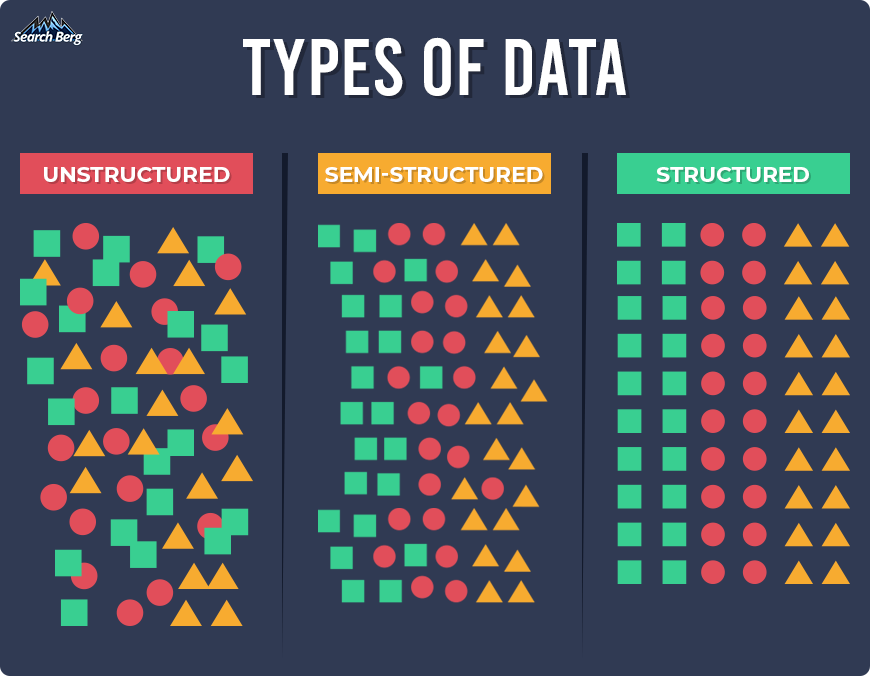
Structured data may sound like a concept strictly for the tech wizards among us. In reality, however, things aren’t as complicated as they may appear from a distance.
In the simplest terms, structured data is a standardized format for providing information about a page and classifying the page content. In essence, it’s a way to explain your website’s content to search engines in a language they understand.
By using structured data, you’re giving Google a deeper insight into your content. This can help your site rank higher and make your search results more attractive. The outcome? Impressive click-through rates (CTR).
Let’s take a product page on your eCommerce website as an example. Without structured data, Google sees the page as a mix of images, text, and links. But with structured data, you can specify the product name, price, availability, ratings, and more. This information can then be used to create rich snippets, enhance your listing on Google SERPs, and make your business more attractive to potential customers.
Google’s preferred format for structured data is JSON-LD. It stands for JavaScript Object Notation for Linked Data; you’ll often see it integrated into the header of a webpage.
The specifics of implementing JSON-LD can be technical and may require assistance from a developer. You can also use plugins available for popular platforms like WordPress; they’ll help you add structured data to your site with ease.
Another way to implement structured data is by using Google’s Structured Data Markup Helper. This tool guides you in tagging the data fields on your website for better classification.
Google’s Search Console also includes a report for ‘Rich Results,’ which helps you monitor how your structured data is performing and identify any errors that may be impacting your rich results.
11. Avoid Duplicate Content

If originality is the soul of wit, avoiding duplicate content is the lifeblood of eCommerce SEO. In the eCommerce marketing landscape, duplicate content is a cardinal sin that can significantly hamper your Google SERP rankings.
Duplicate content refers to substantial chunks of content that appear in more than one location on the internet. These locations can either be within the same domain (internal duplicate content) or across different domains (external duplicate content).
Why is duplicate content such a big deal? Search engines, including Google, aim to provide the most relevant search results to users. When the same content appears more than once, search engines get confused and have trouble determining which version is more relevant for a given search query. This can result in search engines choosing to display only one version of the content in search results, which may not be the version you want to rank.
eCommerce websites are filled with tons of product pages. Since the quantity is so high, the risk of duplicate content is off the charts. The same product description can appear on multiple pages, or the same page can be accessed via different URLs.
How can eCommerce businesses combat this issue?
Canonical Tags
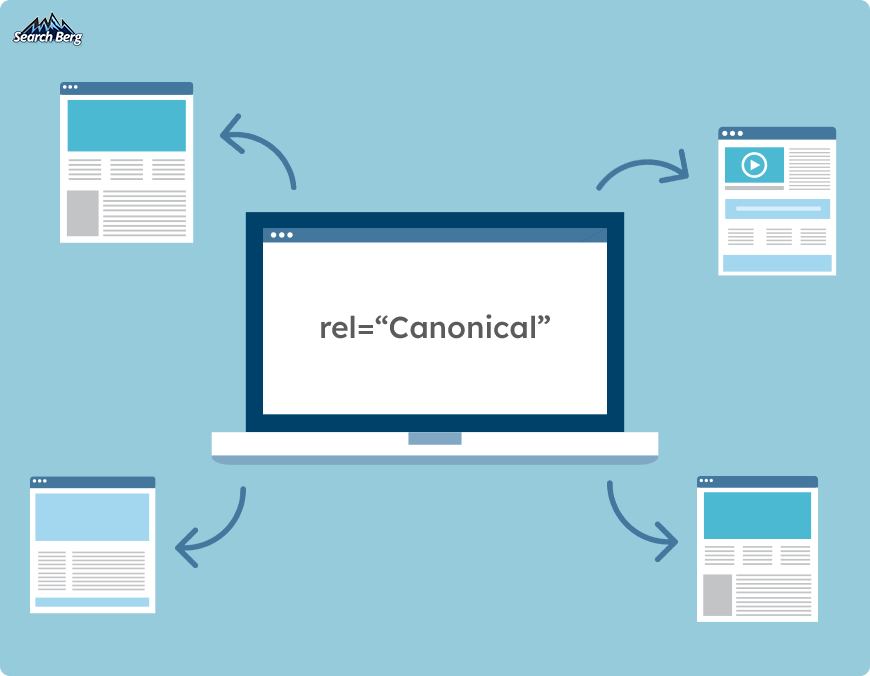
In many cases, you can’t avoid using duplicate or very similar content on your eCommerce site. This is where canonical tags come in handy. A canonical tag (rel=”canonical”) is a way of informing search engines that a URL represents the master copy of a page.
Let’s say you’ve listed the same pair of sneakers in both the “Men’s Footwear” and “Sports Shoes” categories on your site. The URLs might look like this:
To avoid getting penalized for duplicate content, you could decide that the first URL is the “canonical” version and add a canonical tag to the second URL to point to the first one. This way, Google understands that these pages are essentially the same, and it should focus on the canonical page for ranking purposes.
301 Redirects

A 301 redirect is the most search engine-friendly method for webpage redirection. If you have pages with similar content, you may want to guide search engines and users to one primary page through a 301 redirect.
Let’s say you initially had separate pages for ‘red wool sweaters for men’ and ‘men’s red wool sweaters.’ Given that these pages essentially sell the same product, you could use a 301 redirect to point one page to the other.
So, if a user (or search engine) lands on “www.yoursite.com/red-wool-sweaters-for-men“, they’d be automatically redirected to “www.yoursite.com/mens-red-wool-sweaters“. All the link equity from the redirected page is transferred to the new page, preserving your SEO efforts.
Parameter Handling
Parameter handling can be a bit of a beast in the world of eCommerce SEO. Parameters in URLs are often used for tracking clicks or sorting items, but they can generate additional URLs for the same content.
For example, you might have a URL like “www.yoursite.com/category?page=2 or www.yoursite.com/product?color=blue“. The parameters here are “?page=2” and “?color=blue”, which can lead to the creation of many URLs pointing to similar or identical content.
To manage this, Google Search Console offers a URL Parameters Tool. You can specify how you want Google to treat certain parameters (like ignoring them or considering them representative of unique content). This can help reduce the chance of your eCommerce site suffering from duplicate content issues.
12. Embrace Social Media Integration

The internet is no longer a one-way street. It’s more like a bustling, 24/7 cocktail party, where conversations, recommendations, and cat videos flow in all directions.
At this digital cocktail party, social media platforms are the effervescent hosts; they facilitate connections, discussions, and plenty of purchasing decisions. And guess what? Google loves a good party.
When it comes to enhancing your eCommerce site’s Google rankings, social media integration isn’t just the icing on the cake; it’s another rich layer of that delicious SEO cake we’ve been baking!
Boosting Brand Visibility
Every Facebook share, retweet, or Instagram tag exposes your brand to new customers. It’s like playing hide-and-seek in the dark and holding a high-powered flashlight; you’re easier to find.
While Google hasn’t confirmed social signals as a direct ranking factor, numerous studies suggest a strong correlation. Social signals (likes, shares, comments, tweets, pins, etc.) are like applause from an invisible audience. Google may not admit it, but we all know that loud applause can sway a judge’s decision.
Authoritative Backlink Power
High-quality backlinks are like gold nuggets for your Google rankings. And social media can be the most productive gold mine.
A viral blog or product video doesn’t just generate traffic; it also attracts backlinks from bloggers, journalists, and other website owners who find your content worthy of reference.
The more high-quality backlinks you earn, the more Google sees you as an authoritative figure in your industry!
Indexing Speed
Here’s a little secret: Google loves fresh content. And the faster Google indexes new content, the sooner it can appear in search results.
Publishing new content and sharing it on your social channels is a great way to speed up the indexing process. It’s like showing Google directly where the fresh content buffet is rather than waiting for it to stumble upon it on its own!
Search Berg: The Last Piece of the eCommerce SEO Puzzle

eCommerce SEO isn’t a walk in the park. It’s not a picnic under a shady tree or a leisurely paddle in a serene lake. In fact, it’s more like competing in a triathlon while solving a Rubik’s cube. It’s a game where the rules are constantly changing, the playing field never stops shifting, and the finish line keeps moving.
eCommerce SEO requires strategy, determination, and the will to keep up with Google’s never-ending algorithm updates. It’s about knowing how to perform extensive keyword research, possessing the skills to optimize your product pages, having a knack for building high-quality backlink profiles, and so much more. We’re just scratching the surface here.
Sounds like quite a game, doesn’t it? Well, it is. But here’s the good news: you don’t have to play it alone.
At Search Berg, we’re not just players in the eCommerce SEO game; we’re grand masters. As a trusted eCommerce SEO agency, we know exactly what we’re doing. Equipped with years of experience, a toolkit filled with cutting-edge strategies, and a passion for helping eCommerce websites grow, we’ve mastered the art of helping online stores conquer Google SERPs.
Are you ready to play? Explore our eCommerce marketing services to get this game started! It’s not just about winning; it’s about transforming the game of SEO into your business’s home turf. Our eCommerce SEO experts are ready to take the reins. Let’s show Google what we’ve got!




